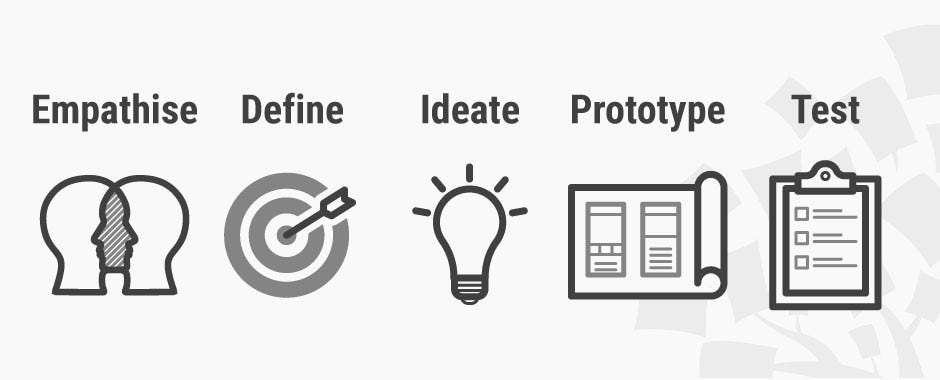It’s story time.
One day, a truck driver tried to pass under a low bridge, but miscalculated the height and wedged the truck underneath the bridge, unable to move.
When emergency services, firefighters, and engineers arrived on the spot to find a solution to the traffic jam being caused, they debated — should they dismantle the truck? Knock off parts of the bridge?
When a young man passing by saw the commotion, he said — why not just let air out of the tires?
This is what we call out-of-the-box thinking, or design thinking.
But how is this relevant to digital marketing?
These two thinking processes (or paradigms) in marketing can help your business capture the mindset and needs of your target audience while allowing you to come up with innovative solutions to immediate issues.
So what exactly is design thinking?
Creative problem-solving.
With a human-centric core, design thinking is a non-linear, solution-based approach that looks to understand the people one is creating for, challenge assumptions, and create solutions that lead to better products and services. The question is always: what is the human need behind this?
Design thinking means combining an economically viable + technologically feasible perspective that inspires empathy and understanding for your target users. Its five (not necessarily sequential) principles — as first defined by Nobel Prize laureate Herbert Simon in 1969 — are:
- Empathise — with your audience
- Define — your insights and your audiences’ needs
- Ideate — by challenging assumptions and developing solutions
- Prototype — to create these solutions
- Test

Source: Interaction Design Foundation (CC 3.0)
Why is it important to businesses?
With empathy, ideation and experimentation, design thinking can help your business figure out the unmet needs of customers, reduce risks and create revolutionary, not incremental, solutions when launching new programs (because of multiple testing phases). Besides this, design thinking can help an organisation learn about itself and its target audiences more quickly and efficiently.
And what is systems thinking?
Systems thinking means a holistic approach of seeing things from a broad perspective of overall patterns and cycles, rather than just specific events in a system. It works against traditional analyses that seek to study systems and organisations by breaking them down into separate elements. It asks:
How are elements in a system interconnected?
How do these elements act and relate in complex systems?

(Source: Kohei Nishizuka)
Originating in 1956 by MIT professor Jay Forrester, one of the most important components of systems thinking is attention to feedback. It involves not only looking at customer feedback, but also feedback in management to make sure you don’t take actions that have been counterproductive in the past, for example, adding more workers to a lagging project even though this tactic didn’t work in the past.

Source: GliderMaven (CC 1.0)
Cause-and-effect are a common theme everywhere, but in systems thinking it can help you build a better perspective on connections and relationships, and feedback loops.
Design vs Systems thinking.
There isn’t much of a relationship between the two. They aren’t mutually exclusive, opposites, or even have much in common. Design thinking focuses on synthesis, and systems thinking on analysis.
- Building up vs Breaking down — Focusing on synthesis, design thinking is about creating and building. Systems thinking is about breaking systems down to their components to understand the bigger picture.
- Narrow vs Wide — Systems thinking looks thoroughly at strategies for potential unintended consequences; what is the impact of a product on competition, your business finances, brand, and performance?
Design thinking’s focus is more narrow; it’s on creating things customers will like without thinking about secondary impacts.
Why should these paradigms matter to digital marketers?
As digital marketers, we see technology evolve every day before our eyes. With automation, machine learning and robotics inspiring transformations in healthcare, medicine, communication, and transportation, we now need human-centered marketing strategies more than ever. Strategies that tackle real problems faced by real people — not just metrics for success and failure.
Design and systems thinking processes can help us do that.
Marketing might have a bias that systems and design thinking are two completely different strategies, and marketers neglect that the two processes can complement one another. However, as we said, the two paradigms aren’t mutually exclusive.
As marketers, we don’t just choose models to follow, but also try and recognise limitations in that model and learn how to shift fluidly between systems and design thinking while working.
As the story in the beginning illustrated, the most obvious solutions are not only the ones hardest to come to because of self-imposed constraints, but also the easiest to train into yourself with a little self-awareness and practice.
Originally written for and published on Digital Odyssey.
